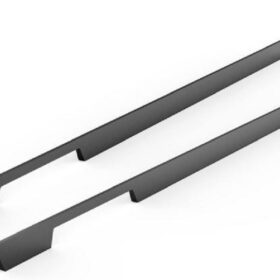Safety and Installation Guidelines for Kitchen Furniture Handles
Safety and Installation Guidelines for Kitchen Furniture Handles: A Comprehensive Overview
Ensuring the safety and longevity of your kitchen furniture requires meticulous attention to detail, particularly when it comes to the selection and installation of cabinet handles. These guidelines provide comprehensive guidance to safeguard both you and your kitchen investments.
Materials and Construction
When choosing kitchen furniture handles, consider materials such as stainless steel, aluminum, or brass for their durability and resistance to wear and tear. Avoid materials that could pose safety hazards, such as sharp edges or protruding parts. Ensure handles are securely constructed with sturdy joints and a solid connection to the cabinet surface.
Ergonomics and Functionality
Handles should be ergonomically designed to provide a comfortable grip and effortless operation. Choose handles that are the appropriate size and shape for your hand and the intended use. They should allow for easy opening and closing of drawers and cabinets without straining or injury.
Height and Spacing
Determine the optimal height and spacing of handles based on the dimensions of your cabinets and drawers. Standard guidelines recommend a height of 3.5-4.5 inches above the countertop for upper cabinets and drawers. Handles on lower cabinets should be positioned higher, around 6-7 inches from the floor. Maintain consistent spacing between handles for a cohesive and visually appealing look.
Installation Technique
Proper installation is crucial for the safety and longevity of your handles. Use screws that are appropriately sized for the handle and the cabinet material. Drill pilot holes to prevent splitting or damage to the wood. Ensure handles are firmly tightened to the cabinet surface, but avoid overtightening, which could strip the screws or damage the handle.
Maintenance and Cleaning
Regular maintenance and cleaning will extend the life of your handles and keep them looking their best. Wipe handles with a damp cloth and mild soap to remove dirt and fingerprints. Harsh chemicals or abrasive materials should be avoided. Apply a light coat of furniture wax or oil to protect the finish and prevent corrosion.
Safety Considerations
Avoid sharp or pointed handles that could pose a hazard to users. Ensure handles do not protrude too far beyond the cabinet edge, as this could cause snagging or injury. If handles become loose or damaged, replace them immediately to prevent accidents.
Adhering to these safety and installation guidelines for kitchen furniture handles ensures a secure and functional kitchen environment. By selecting durable materials, prioritizing ergonomics, and installing handles properly, you can enhance the safety, comfort, and aesthetics of your kitchen for years to come.
-
2024-11-29Top Trends in Modern Kitchen Cabinet Pulls for 2024
-
2024-11-28The Ultimate Guide to Modern Kitchen Cabinet Pulls- Materials, Styles, and Tips
-
2024-11-27Elevate Your Kitchen Design with These Must-Have Modern Cabinet Pulls
-
2024-11-26Sleek and Stylish- The Best Modern Kitchen Cabinet Pulls for a Contemporary Look










